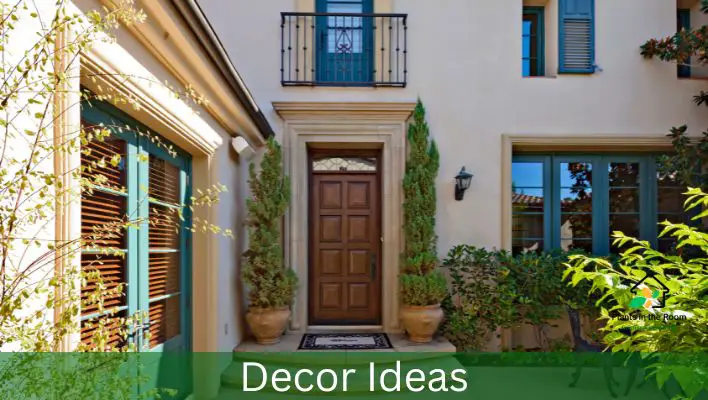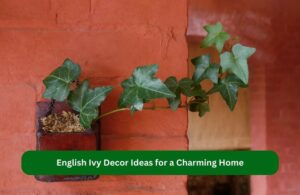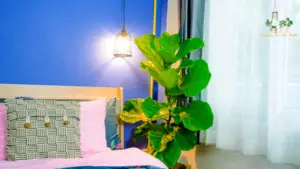This list is subject to be updated on a regular basis.
Welcome to our glossary of terms related to home decor with indoor plants. This guide provides a comprehensive list of terms commonly used in indoor gardening and home decor, including different types of indoor plants, planters, soil mixtures, and other materials used in indoor gardening.
Whether you’re a seasoned indoor gardener or just starting out, this glossary is a valuable resource to help you understand the terminology and techniques involved in creating a beautiful and thriving indoor garden.
- Air plants (Tillandsia): Epiphytic plants that do not require soil and can grow attached to other surfaces, such as driftwood or decorative holders, making them a popular choice for home decor.
- Artificial light: A light source designed to mimic natural sunlight, often used to supplement or replace natural light for indoor plants, particularly useful in low light conditions.
- Biophilic design: A design concept that incorporates natural elements, such as plants and other organic materials, into indoor spaces to promote health and well-being.
- Bonsai: The art of growing miniature trees or shrubs in containers, using specialized techniques such as pruning and wiring to create a natural and aesthetically pleasing form.
- Climbing plants: Indoor plants that climb or vine up walls, trellises, or other structures, often used to create a vertical garden or to add interest and texture to a room.
- Decorative stones: Small rocks or pebbles used as a decorative mulch layer on top of soil or potting mix, often used to help retain moisture and prevent soil erosion.
- Drip irrigation: A watering system that delivers water directly to the soil or roots of indoor plants, often using a timer and tubing to control the flow of water.
- Floor plant: A larger indoor plant, often used as a statement piece in home decor, such as a fiddle-leaf fig or a palm tree.
- Focal point: A design principle in which a single element, such as a large indoor plant, is used as the main feature or center of attention in a room.
- Green decor: Home decor that incorporates plants and foliage as a design element, such as plant-themed wallpaper, textiles, or artwork.
- Green wall: A vertical arrangement of indoor plants, often mounted on a wall or free-standing structure, which can serve as a decorative accent or space divider.
- Greenhouse: An enclosed structure that provides a controlled environment for growing plants, often used for starting seeds, growing tropical plants, or for creating a year-round indoor garden.
- Grow light: A light source used to supplement natural sunlight for indoor plants, providing the necessary spectrum of light for photosynthesis.
- Hanging planters: Containers specifically designed for hanging indoor plants, which can add visual interest and save floor space.
- Indoor herb garden: A collection of herbs grown indoors, often in containers or small planters, for use in cooking and home decor.
- Kokedama: A Japanese art form that involves wrapping a plant’s root ball in moss and twine, creating a ball-shaped plant that can be hung or displayed on a surface.
- Living art: A form of home decor that incorporates living plants and foliage into art pieces, such as framed moss walls or vertical gardens.
- Macrame plant hangers: Decorative hangers made of knotted cord or rope, often used to display hanging plants.
- Moss poles: A pole covered with moss is used to support climbing plants like philodendrons or monstera plants.
- Moss wall: A living wall composed of different varieties of mosses that adds natural texture and visual interest to an indoor space.
- Multi-level plant stand: A stand or shelving unit designed to hold multiple indoor plants, often used to create a plant display or to add height and dimension to a room.
- Plant sconces: Wall-mounted containers display small indoor plants, often used to create a decorative accent or save floor space.
- Planter stand: A piece of furniture designed to hold indoor plants and elevate them off the ground, often used to create visual interest and add height to a room.
- Tabletop planters: Containers designed for small indoor plants often used to add a pop of greenery to coffee tables, desks, or shelves.
- Terrarium: A small, enclosed container for growing plants, often used as a decorative accent in home decor.
- Trellis: A structure used to support climbing plants, often used to create a vertical garden or to add height and dimension to a room.
I hope this glossary of terms related to home decor with indoor plants has been helpful in providing you with a better understanding of indoor gardening and has inspired you to take your indoor gardening skills to the next level.
Remember always to do your research and properly care for your indoor plants to ensure they thrive and bring joy to your home for years to come.
Disclaimer
Please note that the information provided in this glossary is for educational and informational purposes only. It is not intended to replace professional advice or guidance, and we recommend that you consult with a qualified expert before making any decisions regarding your indoor plants.
We do not assume any responsibility or liability for any consequences arising from using the information in this glossary. You are solely responsible for your own actions and decisions in relation to indoor gardening and home decor.






